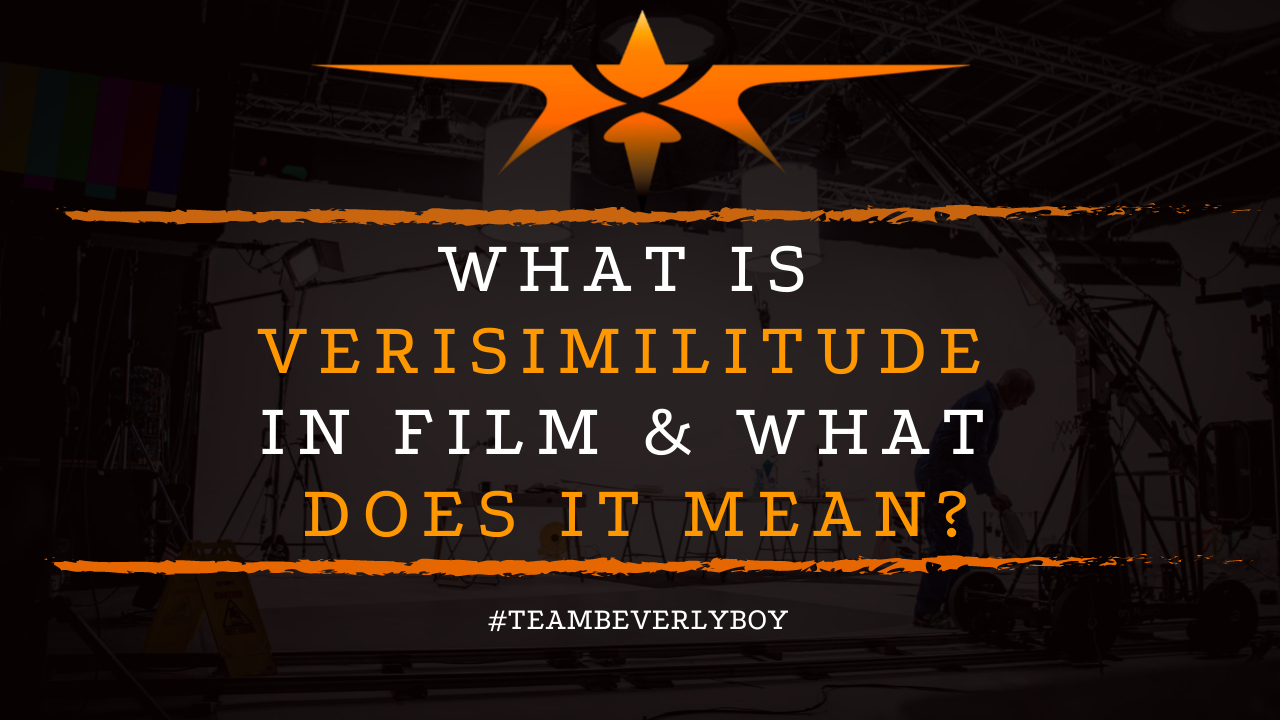
What is Verisimilitude in Film & What Does it Mean?
When it comes to filmmaking, screenwriters are taught to take a lot of time to form their characters. In fact, character building represents a unique area of importance that screenwriters focus on throughout their careers. Because in order for audiences to connect with characters, there must be some level of plausible similarity between the characters and people in real-life. Thus the concept of verisimilitude in film is frequently taught to screenwriters.

As well as to filmmakers to help explain this strategy of creating stories and characters within those stories that are realistic.
What is Verisimilitude in Film?
If you were to hear the term “verisimilitude” you would probably struggle to come up with a meaning, unless you had already had the term explained to you before.
Verisimilitude in film essentially means that there are realistic, plausible details within the story. And that the characters or other elements of the story seem as if they are similar to those experienced in real-life and/or are similar to aspects of real life.
Instill Confidence
Verisimilitude in film is important because it’s what allows the audience to feel confident in what they are seeing. And to immerse themselves in the film world that is presented before them.
Thus, verisimilitude in film is not always what is plausible in real life. But what is plausible in the context of the story taking place in the film.
For example, verisimilitude represents the filmmaker having presented facts about the reality of the story and the film and sticking to those facts.
Consider This
For example, if the filmmaker starts the story off with some justification of rapid transport through time. In which it only takes 1 hour to go back 500 years. Or 1 hour to go forward 500 years in time the filmmaker must stick to this “reality” of the film’s timing.
Of course this isn’t reality for us, but it’s the reality created for the film and therefore, the filmmaker must stick to it. The filmmaker, therefore, could not say that someone traveled back in time 1,000 years in half an hour. This would not make sense.
This idea, of plausible or reality within the story represents verisimilitude in film.
Plausibility
Essentially, verisimilitude in film represents the steps taken to deliver a plausible storyline to the audience through the presentation of characters and unique elements that the filmmaker is crafting as part of the story and world that the audience is to be immersed in.
Thus, through verisimilitude the filmmaker establishes a story that the audience can buy into.
Examples of Verisimilitude in Film

It’s important to understand that films shall not exhibit verisimilitude simply if they are science fiction or action films. It might be easier to recognize the plausibility that is setup by the filmmaker in these films.
But verisimilitude in film is critical to virtually any and all types of fiction including comedies, dramas and other genres. If you look at verisimilitude as the plausible presentation of the story.
And the steps that are taken to establish a story that the audience will buy into. It’s quite simple to see the various examples of verisimilitude in the films that are commonly enjoyed in modern theaters.
Although elements of a story may be incredibly unlikely in “real life” , verisimilitude establishes what is likely in “real life for the story”. Thus, the idea is to establish plausibility among the audience for what “could” happen in the story that the filmmaker has established.
Consider This
For example, while verisimilitude in film may not necessarily apply to what’s “real” in real-life. As it mainly applies to what’s conceivable in the world of the film or story being delivered. Remember the reference we made to characters in the beginning?
It’s important for screenwriters to take their time in understanding characters and how they evolve and are formed. This is because verisimilitude in film will almost certainly apply to a mix of what’s expected in “real life” as well as what’s expected to be real within the context of the film.
Let me explain
If a film has a character that is supposed to be kind, then we know that in “real life” kind people tend to have empathy toward others and are known for being apologetic. Therefore, IF a film has a “kind” character, and that character accidentally trips someone walking down a busy street.
Then the audience is going to expect that the character will apologize to the individual for tripping them accidentally. This is because the film has established the character as a kind individual and kindness. Both in real life and in the context of the story.
Which would result in the character being apologetic towards the individual that they accidentally tripped.
Observation
In another example of verisimilitude in film, it’s important to note that verisimilitude is established in a story by being observant of what would be expected in a real-life situation.
Because much of what we see and do in the real world is carried over into the make believe worlds that we create during our filmmaking.
Weather
In another example of verisimilitude in film, if the setting of the story were to begin early in the day with dark clouds and wind in place. The end of the day might have inclement weather such as snow.
Which explains the grey setting of the sky. Just as in real life when a snowy day would likely start out gray with wind and a brisk breeze in the air. This would be accepted in a story.
In Summation
Although some of these details might seem minimal. And as if they are not even all that important. It is these very details that make up the verisimilitude of the film.
And the underlying ability for the filmmaker to establish logical, realistic, and relatable details within the story. Based largely on the expected reality of both “real life” and the “real life” expectations of the story being created.


